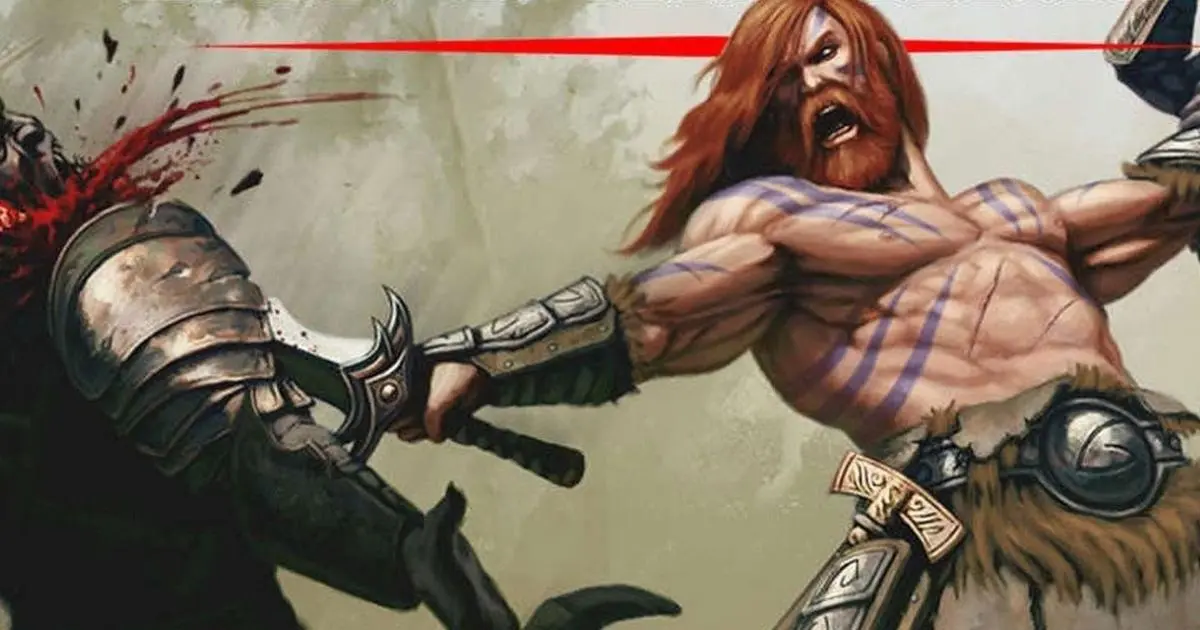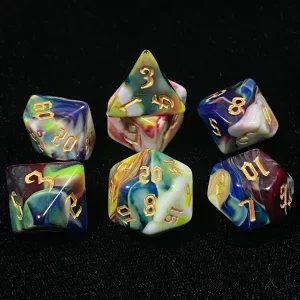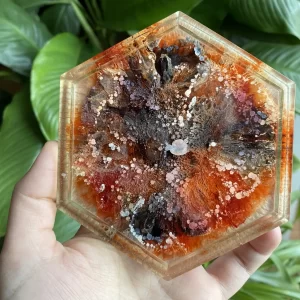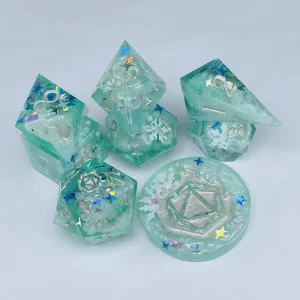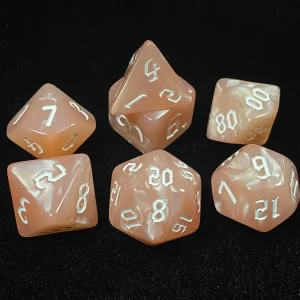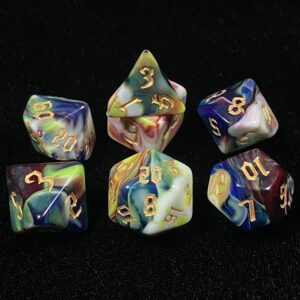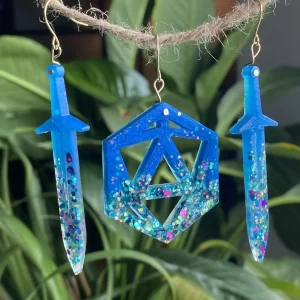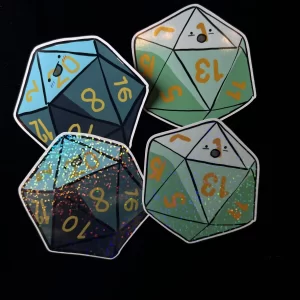The Warlock. It’s a class that’s wrapped in mystery, an enigmatic creature that lurks in the dark. They draw their power from an otherworldly patron, granting them but a modicum of the power available. A gift that can be taken away just as easily as it is given if the Warlock’s patron is not placated. Just a little more spice to an already delightful class.
The most intriguing thing about this spellcaster is that they remain so unique among all the other casters available in D&D 5e. Their power is drawn and replenished in ways that are different from the norm and don’t use the same set of rules to accomplish this. Here, you’re going to find all of the best ways to optimize your Warlock experience.
Table of Contents
What to Expect from This Guide
This guide is here to condense all of the things you need to know about playing a Warlock into one space that’s easy to manage and navigate. The best races, the best spells, everything we include here only gives you the top options for the class you want to play so that you spend less time scrolling through the things that are, essentially, useless.
However, we can’t avoid all the bad aspects of the Warlock, so you’ll want to take a quick peek at the key we have below.
BLUE is essential for your class.
GREEN is excellent for your class.
ORANGE is alright but often quite specific to a situation.
RED should be avoided at all costs.
What Makes a Warlock?
Learning what makes up a Warlock is an integral part of playing this class. The features that come with this spellcaster are pretty important when deciding if this is going to be the right class for you.
Hit Points (HP): d8 (good for a dedicated caster class).
Saves: The only good saves you have are for Wisdom and Charisma, which are ideal for mind control and paralysis resistance.
Proficiencies: As a Warlock, Proficiencies refer to a few things. Let’s take a quick look at them.
Weapon and Armour Proficiencies:
You won’t need to use weapons, so light armour and weapons are absolutely fine for Warlocks.
Skill Proficiencies:
The skill list can be a bit frustrating, but you get two skills and some Face skills.
Tools: None.
Otherworldly Patron: This is the source of your power, and it’s also your subclass so you’re going to want to choose carefully. We have a brief rundown of the various subclasses on offer a little later in this guide.
Pact Magic: The thing with Warlocks is that they have completely unique magic, which is part of what makes them so interesting. Unlike other casters, you’ll find that all your spell slots are the same, you only get a few, and they recharge after short rests. You’ll be relying on cantrips a lot.
Eldritch Invocations: This is a pretty big part of designing your Warlock build. It offers you incredible power, and it’s exactly why things like Eldritch Blast are so popular. You get eight invocations over 20 levels, and an extra one if you pick the Eldritch Adept feat.
Pact Boon: This defines how you apply those otherworldly powers that you’ve been granted. You will get quite a few options that offer a different range of abilities for you to choose from. Of course, the effectiveness of Pact Boons has shifted with the release of new material.
Mystic Arcanum: This is where you pick the spells you love the most, and since they don’t scale like other spellcasters you have a lot of free choices here.
Eldritch Master: Since you can get your spells back after a short rest, all this ability really does is save you an hour. It’s pretty disappointing and there are much better class features out there.
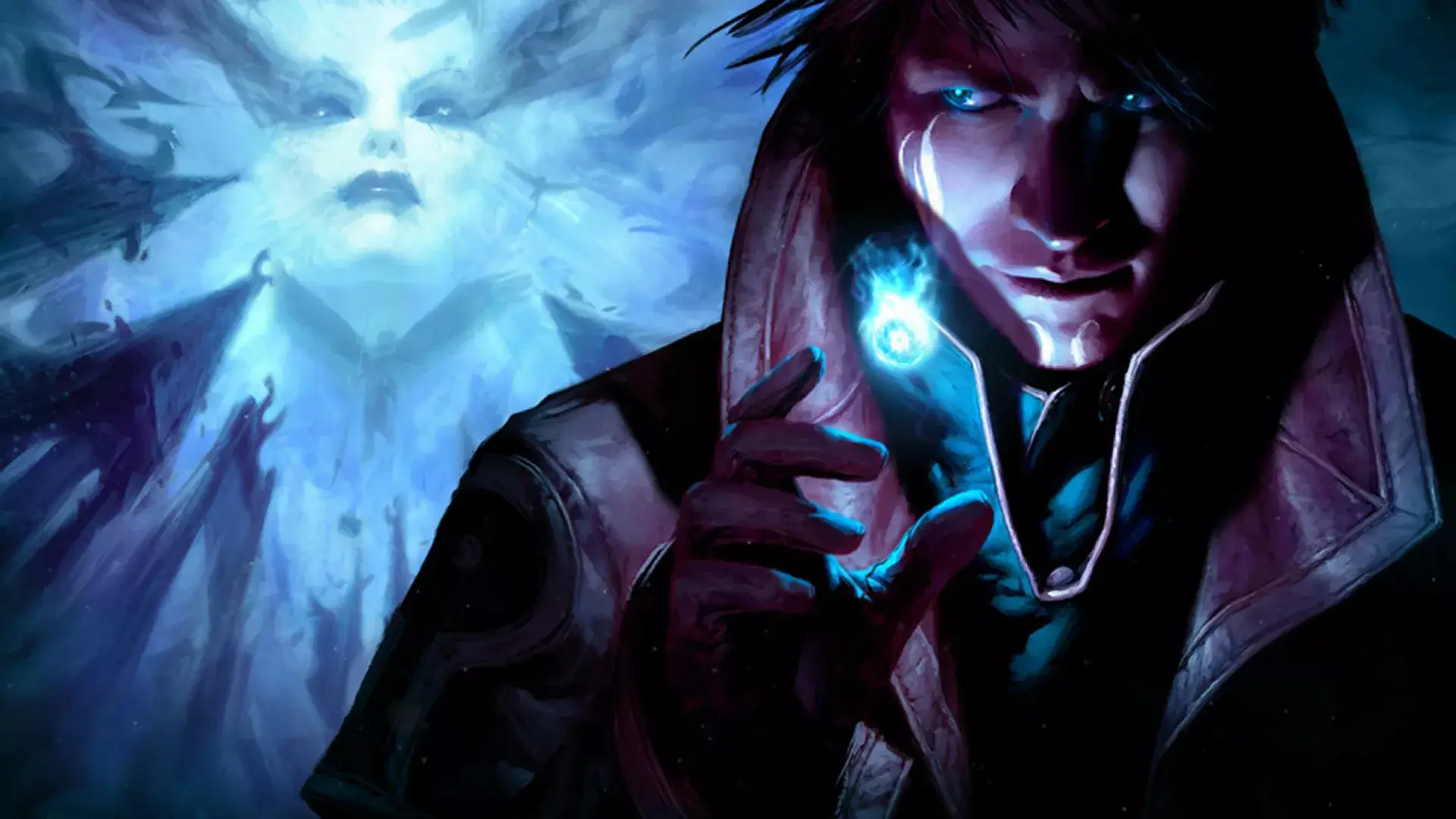
Pact Types
There are actually several different types of Pact that you can choose from for your Warlock in 5e. Pact of the Blade tends to be the one we mention most, but that doesn’t mean it’s the number one option for you.
Pact of the Blade: This is the most challenging build available, and you might struggle quite a bit if you are a new player. You do get a lot of magic weapon abilities early, but if you play your cards wrong you’re going to get outdone by every other melee character.
Pact of the Chain: This gives you the opportunity to have a familiar. They are exceptionally useful and can be used to scout, flank the party, and even send messages. They can also become a powerful ally with the help of your invocations, improving your odds in battle.
Pact of the Talisman: The talisman is a physical item that has been imbued with your magic. You can use invocations to enhance this further and make it even more powerful. Even better is the fact that if another character needs to use it they can, you just have to hand it over.
Pact of the Tome: This is probably the best option, even if it is the Pact that is mentioned the least. It’s simple, sure, but it also gives you access to masses of spells and casting options that would otherwise be unavailable to you. It gives you the chance to shine as a spellcaster.
The Role of the Warlock
As a Warlock, it is likely that you’ll be expected to be the face of the party since Charisma is your primary stat. After all, Charisma isn’t all about looks – it’s how you carry yourself and the way you handle things.
Warlocks have the ability to deal out massive amounts of damage and are one of the most powerful spellcasters out there. They also make superb infiltrators and scouts thanks to their versatile spell selection, which means you end up with a very versatile party member and one that can fill several different roles.
But what about the strengths and weaknesses that come with the Warlock class? Well, Charisma is often ignored by other classes, which makes them useful as a spokesperson. They are also the perfect ranged blaster and offer some fantastic firepower in addition to providing a nice selection of utility spellcasting.
However, there are also weaknesses. While the Warlock can dish out a lot of damage, they do have a harder time taking it. They might be fairly unique from other spellcasters, but they certainly retain the squishiness. They also have a limited number of spell slots, and while these are recovered quickly you have to ensure you have time for a short rest.
In D&D 5e, the Warlock is a lot like a special forces operator for their Otherworldly Patron. You get granted a portion of their power, you are sent on missions, and you have to report back to them. It’s an incredibly powerful and versatile class to play – you’ll have fun with it.
Optional Warlock Features
When we refer to optional features, we’re talking about class aspects that were introduced in later texts. For Warlocks, Tasha’s Cauldron of Everything offers some fantastic options. However, not every table will allow them so you’ll need to talk to your DM first.
Additional Spells: Honestly, the expanded spell list should be allowed in every game. It gives the Warlock class so much flavour and versatility, allowing you to play a character that’s more three dimensional and give you a little more oomph.
Pact of the Talisman: This is an optional Pact Boon and it works on all Warlocks. It’s not more powerful than any of the other available options but it does offer some fun playstyle features.
Eldritch Versatility: You have the ability to retrain a cantrip as well as a Pact Boon – the latter being an important and powerful option. Being able to retrain your cantrips is very useful and should be allowed for all Warlocks to prevent them from being crippled as they level. However, Pact Boon changes can be as significant as subclass changes, so DMs should be wary.
Warlock Ability Scores
When you’re playing a Warlock, Charisma is everything. It’s your primary stat and one that is going to come in handy a lot. You’re charming, convincing, everything that’s needed to get your way. Here’s a quick look at the ability scores for Warlock in 5e so you can see what you should be focusing on.
Strength (STR). A melee Warlock might be tempted to boost STR a little, but it’s still easier to focus on CHA and remains a dump stat.
Dexterity (DEX). If you’re a melee Warlock, you need 14 DEX if you want to pad your Armor Class. However, if you are Hexblade this is needed less than other Warlocks.
Constitution (CON). Don’t skimp on this stat because we all need Hit Points, but remember that Fiendish Vigor gives you a nice health boost.
Intelligence (INT). It can be nice to have this one for Knowledge skills, but aside from that, this is nothing more than a dump stat.
Wisdom (WIS). This is only needed for saves, and you’re not likely to get great Wisdom scores as you already have Proficiency.
Charisma (CHA). The key stat for your class as well as the one you need in order to successfully cast and succeed as a Warlock.
The Best Races for Warlock

When you are picking a race for your Warlock, a Charisma bonus tends to be a crucial aspect to look for. There are countless races and variations available in Dungeons and Dragons 5e, so we are bringing you the best options so that you can optimize your class. The good news is that there is little other than Charisma a Warlock needs so your options are quite vast.
Aarakocra
Customised Origin: It’s an excellent choice offering +2/+1 increases.
Default Rules: You get flight but no Charisma increase so stick with Winged Tiefling
Aasimar
You get a really nice Charisma boost with this race as well as damage resistance. However, only two out of the three types are recommended for a Warlock.
Fallen: The fear effect is perfect for crowd control, there is a good damage boost, and this is the best choice for a melee Warlock.
Protector: Radiant Soul will give you temporary flight as well as a damage bonus, which is great even if the Wisdom increase isn’t particularly useful.
Dragonborn
Draconblood: While similar to the standard Dragonborn, you also get Forceful Presence which is very useful when you’re the face of the party.
Dragonmarked Elf
Mark of Shadow: You get exceptional ability score increases, good innate spellcasting, and you get access to a select list of spells that are only available to Dragonmarked.
Dragonmarked Gnome
Mark of Scribing: The ability score increases are workable and there are some nice new spells that have been added to the Dragonmarked spell list.
Dragonmarked Half-Elf
Mark of Detection: You get some good ability score increases and almost every spell is brand new to the Warlock spell list. They bring some really nice utility and scouting options.
Mark of Storm: Nice ability score increases, and it should be noted that while most of the spells are underwhelming they can quickly be replaced by better and more powerful ones as you advance. Several of the better spells are completely unique to the race as well.
Dragonmarked Halfling
Mark of Hospitality: You do get a very nice and workable ability score increase, and the spellcasting works incredibly well for a Warlock. The innate spellcasting is excellent for utility and the low-level spells scale well.
Dragonmarked Human
Mark of Passage: The Dexterity and Charisma boosts are needed for your class and you get Misty Step for free. Almost all of the spells are completely new as well for even more versatility.
Elf
The added Dexterity from this race is a good Armor Class boost, and you also get Perception as an excellent bonus. However, very few options offer you a Charisma bonus.
Drow: Sunlight Sensitivity can be a real pain, but you get a Charisma bonus and free spells.
Eladrin: You get free teleportation on a short rest, which is handy. Since the rider effects for the spell are Charisma-based it’s also perfect for the Warlock. There’s a tasty Dex bonus too.
Half-Elf
Variant half-elves have some really nice options, and you mustn’t forget about Darkvision which is probably one of the most useful features out there.
Drow Half-Elf: You get some great free spells which are very useful with the Warlock’s limited options.
High Half-Elf: You get some nice additional cantrips that will help to further boost your damage. Green Flame and Booming Blade are especially good for Pact of the Blade Warlocks.
Standard Half-Elf: You’ll get two free skills with this option, fantastic when you’re the face of the party (needed as well).
Halfling
If you’re a Pact of the Blade Warlock you’re going to enjoy the Dexterity bonus. Not to mention that Lucky is a fantastic additional trait to have.
Lightfoot: You get bonus Charisma with this option, making it well worth it.
Human
The standard human isn’t going to give you much at all, and it’s a wasted choice, but being a human variant definitely comes with a few perks.
Variant: You get two +1 increases and an additional skill as well as a feat at first level. It brings a lot of versatility to your class and can make for a very interesting play experience.
Kalashtar
Standard: A combination of a Charisma increase as well as a much-needed boost to those Wisdom-based saving throws. It’s not suited to any specific aspect of being a Warlock, but it makes a nice race for building a solid foundation for the class.
Satyr
Standard: There’s that nice Dexterity to boost your AC as well as Charisma to help your spellcasting. You get two free skills as well as Magic Resistance, perfect for being the face of the party.
Simic Hybrid
Standard: There is a nice Constitution increase that’s very helpful, particularly for Hexblade Warlocks. Animal Enhancement also works in your favour as you level up and saves you the hassle of panicking over your already limited spell slots.
Tabaxi
Standard: If you are a Pact of the Blade Warlock, this is a fantastic option to have. The added Dexterity will really boost your AC and the Charisma, well, Warlocks thrive on that.
Tiefling
Asmodeus: A good option, but it should be noted that the Intelligence boost is wasted.
Baalzebul: Similar to Asmodeus but with more offensive spells.
Dispater: Great spells for being a little sneaky as well as a nice Dex boost for your AC.
Fierna: The spell choices here are great for the face of the party; shame about the Wisdom.
Glasya: You get some good sneaky and tricky spells as well as that juicy Dex boost.
Levistus: You get more Hit Points from the Constitution boost and nice utility options.
Devil’s Tongue: This focuses on spells that affect the mind, ideal for Warlocks.
Hellfire: Burning Hands is like a Hellish Rebuke that doesn’t require you to be hit first.
Winged: You can fly and cast all at once, an ideal combination.
Tortle
Standard: There isn’t a Charisma boost with this race, but a Pact of the Blade Warlock can definitely benefit from being a Tortle. You get the same AC as a Warlock with 20 Dexterity, giving you one less stat to worry about so you can focus on Charisma.
Triton
Standard: There are good ability score increases with this racial choice and innate spellcasting gives excellent utility options. It makes the ideal choice for a Pact of the Blade Warlock.
Verdan
Standard: You get a really nice combination of Constitution and Charisma with this as well as gaining Persuasion for free. Telepathic Insight is also one of the most effective ways to overcome potential language barriers you will face as the face of the party.
Warforged
Standard: You have a flexible ability increase that you can throw into Charisma, and the other racial traits will make you a much more durable Warlock. A Warfoged Hexblade Warlock can easily end up with an impressive AC of 20.
Yuan-Ti Pureblood
Standard: You get Magic Resistance and Poison Immunity, which is incredibly valuable. You also have a nice Charisma boost that will help you out.
Warlock Subclasses
Subclasses are an important aspect of your class, and there will come a time when you have to choose one. It can be a tricky choice to make, but there are plenty of benefits that come with each for you to consider.
Of course, this is a brief breakdown because a more detailed one is definitely for another guide. Your subclass is linked to your Otherworldly Patron, and this is part of what will impact your final decision – especially as 5e has made some changes compared to previous editions.
The Archfey: What we love about the Fey is that they are tricksters, and Warlocks who swear pacts to the Archfey will gain the ability to surprise, charm, and confuse creatures around them.
The Celestial: For those Warlocks who choose to make celestial pacts, they have the advantage of gaining the ability to heal their allies and use a selection of spells from the Cleric spell list – which includes some of the best and most crucial healing options.
The Fathomless: If you’re into water magic, this is the ideal choice for you. This subclass gives you new spells that are centred around storms and water, giving you the ability to conjure spectral tentacles that will attack enemies while defending you.
The Fiend: This is probably the most iconic Warlock patron, and it gives you a mix of offensive and defensive abilities. This includes several sources of fire damage that you are sure to enjoy experimenting with.
The Genie: This subclass allows you to make a pact with a genie that represents one of the four major elements. You will get benefits such as empowered spellcasting as well as a magic vessel that you can use as a focus as well as a resting place.
The Great Old One: With this subclass, your patron gives you the ability to assail the minds of your enemies while protecting your own. It’s a truly masterful subclass to select.
The Hexblade: The Otherworldly Patron that you select here is a mystical force that goes only by the name The Hexblade. You will get the ability to use Charisma for your weapon attacks as well as various combat abilities.
The Undying: You become sworn to an undead master, giving you the ability to defy death itself as well as keep the undead at bay.

The Best Warlock Multiclassing Options
Multiclassing can be a lot of fun. However, not every class is compatible with Warlock unless you want to do a lot of Homebrewing. I should mention that the Homebrew aspect can be an absolute blast, but it needs a lot of work if you want the game to remain balanced.
Bard: With one level you get basic spellcasting and another will grant you Jack of All Trades. After three, you get Expertise and can pick a college. Since Bards are also Charisma-based spellcasters, multiclassing as one is a fairly simple task.
Fighter: If you start as a Fighter you get access to heavy armour and shields, which is perfect for a Blade Pact Warlock and you also get Fighting Style. A second level will get you Action Surge, but since you won’t get a great deal from it there’s not much point.
Paladin: Just like the Fighter option, you will gain access to heavy armour and shields for those Pact Blade perks. A second level will bring you Charisma-based spellcasting, Fighting Style, and Divine Smite. The latter of these allows you to burn your spell slots so that you can add a load of radiant damage to an attack – making it a great way to capitalize.
Rogue: Hexblade is the only good combination here because Sneak Attack only works when you have a weapon. The only exception would be if you are choosing to multiclass a Rogue for the Expertise. If you’re going for a Hexblade Warlock, it can often be a better choice to be a Rogue that’s multiclassing as a Warlock for improved efficiency.
Sorcerer: You will find that these are also Charisma-based spellcasters, but the downside is that their abilities are very much level-dependant. So, if you want to take full advantage of this multiclassing ability then you will need to focus on being a sorcerer and having Warlock as your secondary class.
Optimizing Warlock Skills and Backgrounds
Skills are an important aspect of character creation in 5e, and not all of them are useful for you as a Warlock. Some of them are going to be dump stats, others will be highly advantageous. Let us take the hard work out and show you which is which.
Acrobatics (DEX): All you really need is to cast the ability to fly
Animal Handling (WIS): You’re not a Druid, you don’t need this.
Arcana (INT): This is one of the most important knowledge skills in the game.
Athletics (STR): This is a completely useless skill since you’re not Strength-based.
Deception (CHA): Essential for any face of the party.
History (INT): Most campaigns will make this useless, so it’s a situational skill.
Insight (CHA): It’s always useful to know when someone is trying to outsmart you.
Intimidation (CHA): Another essential when you are the face.
Investigation (INT): It’s handy, but you are unlikely to have the Intelligence to justify it.
Medicine (WIS): You’re not the party healer, and Wisdom isn’t a major priority.
Nature (INT): An important skill, but one that diminishes as you level up.
Perception (WIS): Lets you know when someone is trying to sneak up on you.
Performance (CHA): You don’t really need this, but it can add some spice to your character.
Persuasion (CHA): You’re the smooth talker and negotiator, you need this.
Religion (INT): Definitely one of the most important knowledge skills.
Sleight of Hand (DEX): If you’re doing a Rogue multiclass, this can be handy.
Stealth (DEX): Once again, this is for those Warlock Rogues.
Survival (WIS): This is irrelevant to your class.
With regards to backgrounds, there are so many that if we included all of them here it would be a guide in itself. Not to mention that many of them are irrelevant to the class. Here are some of the best considerations for a Warlock.
Acolyte: You get insight, two languages, and a Knowledge skill.
Charlatan: A fun one to play, but not the most useful for a face.
City Watch: Athletics is pretty worthless, but you get insight and two languages.
Cloistered Scholar: You get two Knowledge skills and two languages.
Courtier: This is perfect for being the face of the party.
Criminal: If you’re looking to go down a Rogue route, this is ideal.
Faction Agent: You can pick a face skill or a Knowledge one, two languages, and insight.
Guild Artisan: You get two face skills that aren’t on the Warlock list and a language.
Knight of the Order: You get Persuasion, a knowledge skill, and a language.
Sage: With this, there are two languages and two Knowledge skills.
Urban Bounty Hunter: Great for the face or the Rogue Warlock of the party.
Urchin: A good option for the Warlock who wants to be the party Rogue.
Waterdavian Noble: You get a poor Knowledge skill but also Persuasion and a language.
Warlock Feats
Just like Backgrounds, this is another section that would go on forever if I included every single Feat available to you. Instead, you’ll find the ones that are best-suited to a Warlock in 5e so that you have a better idea of the choices that will boost your class.
Alert: The ability to go first improves the power behind many of your spells and gets those effects started before the enemy can even blink.
Actor: It allows you to capitalise on your Charisma and brings out the social aspect of the game for a little more pizazz.
Crossbow Expert: A Hexblade can really benefit from this in a fun and interesting manner. You get a handy bonus attack that both Hex and Hexblade’s Curse benefit from massively.
Eldritch Adept: You can only take this once, but that’s all you really need. An extra invocation has the ability to be exceptionally powerful.
Fey Touched: This basically gives you two additional spell slots per day. As a Warlock, this is a massive benefit since your spell slots are already quite limited. Just remember, the spells lock.
Fighting Initiate: Pact of the Blade Warlocks will enjoy this one the most because of the additional benefits that come with Fighting Style. It can turn what is already an intimidating high-damage build into a terrifying and unstoppable beast. Interception is also useful for Pact of the Chain Warlocks.
Great Weapon Master: Two-handed weapons are useful for Pact of the Blade Warlocks, and you get a better chance of achieving a Critical Hit. A versatile weapon choice will also help you make the most of this choice as you advance.
Inspiring Leader: This removes the need for Fiendish Vigour, and you already have the Charisma to back this up – even better. You can even use it to target your familiar.
Lucky: This is a good Feat for anyone to have. It’s simple, does what it says on the tin, and it’s exceptionally handy.
Metamagic Adept: Superb for any spellcaster. Normally, a Warlock doesn’t have enough spell slots to make this useful. However, there are simple options such as extending Hex or Hunger of Hadar that can dramatically improve your spell efficiency.
Polearm Master: Hexblades can make good use of a Polearm, but the Quarterstaff is still the top choice for the class. This is because you can use a shield to make up for your naturally low AC.
Resilient: Having proficiency in Constitution really helps with Concentration as well as those ever-common Constitution saves.
Spell Sniper: What this does is remove the need for Eldritch Spear and make Eldritch Blast even more reliable. It’s a really nice addition to the build.
Telekinetic: This offers a tactical method for using your Bonus Action. While it’s not always game-changing to move a creature five feet, you’d be surprised by how often it turns the tide of a battle in your favour.
War Caster: Any Hexblade Warlock needs this. You do have to juggle your weapon in order to cast and maintain Concentration, but it is highly advantageous. Other subclasses should consider using Resilient instead because it is actually more advantageous as your Proficiency bonus increases.
Equipment
The only Warlocks that actually need weapons are Pact of the Blade. Therefore, only Hexblades should actually be using them. Since you have a low AC, you get a natural proficiency with shields and you have medium armour. The weapon that you choose isn’t important, and you can change it regularly unless you have magically bound yourself to one.
The whip tends to be one of the most popular weapon types for Warlocks in DnD 5e because the one-handed reach means that you don’t need to be within the reach of your enemy in order to attack while holding a shield in the other hand.
Taking a light crossbow and several bolts can be a good move for starting equipment as well as a dagger. This gives you the range you need for weaponised attacks as well as something quick you can use when you inevitably end up in an unwanted melee situation.
Armour Choices
Leather is the best starting gear for a Warlock. It’s nothing fancy, but it will keep you protected and give you a decent AC. Following that, Studded Leather is the best a Warlock can hope for and offers fantastic protection. For Hexblade Warlocks, Half Plate is the equivalent and will provide you with a sturdy AC that keeps you robust.
The Best Warlock Magic Items
We all like some good magic items in the game, they make things exciting. However, if I were to show you every magic item that is available in D&D 5e it would be a very long list indeed – you’d click away from this guide in about two seconds. So, we have the best and only the best for your new Warlock.
Common Magic Items
Dark Shard Amulet: You get easy access to all of those funky situational cantrips that are handy but not worth learning permanently. All you need is a DC 10 Arcana check, and that won’t be hard if you have Proficiency. You do need Attunement, and you can only use it once a day.
Uncommon Magic Items
Broom of Flying: One of the best ways to gain flight, hands down. You don’t need Attunement to use it, and it honestly shouldn’t be an uncommon magic item for how good it is.
Cloak of Protection: It requires Attunement and is one of those items that is good for any character. Other than that, there’s nothing exceptional about it.
Goggles of Night: If your race doesn’t have Darkvision and it can’t be cast on your party, this is one of those must-have essentials.
Pearl of Power: It gives you an extra spell slot up to third level, and for Warlocks, this is a sorely needed magic item. It should be noted that the Rod of the Pact Keeper is a better item.
Rod of the Pact Keeper: You can use this to regain a spell slot each day. Additionally, it gives you a +1 to spell attacks and save DCs. The spell slot can also be any level.
Shield: Only a Hexblade gets proficiency, but you have a nice +2 AC with no Attunement, making it a simple yet effective item.
Slippers of Spider Climbing: You can Spider-Man your way around with these, and they are the next best thing to flying. The cost of use is much lower as well, which is always handy.
Staff of the Python: Offering you a good low-level summon with a CR 2, a constrictor like this is good for incapacitating single targets. It also has Blindsight, making it highly functional in areas of magical darkness and obscurity – making it useful above what its CR would suggest.
Stone of Good Luck: If you’re heavily reliant on skills and ability checks, this is the stone for you. It is useful for literally any character. However, if you are solely seeking protection then the Cloak of Protection might be better.
Wand of Detection: Definitely saves you the effort of learning Detect Magic and wasting a spell slot on it.
Wand of the War Mage: If you want more from your levelled spells, Rod of the Pact Keeper is the better choice. However, if you want to spam something like Eldritch Blast and can’t fit Spell Sniper into your build, this is everything you could want and more.
Winged Boots: They are fun, and work well on their own. However, they are more limited than the broomstick and require Attunement.
Rare Magic Items
Amulet of Health: As it puts your Constitution at 19, you can focus your ability scores on other aspects that need a boost – like Dexterity and Charisma. It can actually help to make Concentration a lot easier too.
Barrier Tattoo: Perfect for Warlocks that are not Hexblades, giving you a nice AC boost and working a lot better than Mage Armour.
Cloak of Displacement: It’s one of the best defensive items in the game. When you take damage from any source, it suppresses it temporarily. Pretty handy to have.
Elven Chain: It has one less AC than Barrier Tattoo, but it doesn’t require Attunement. In some ways, that makes this magic item a better choice of the two.
Ring of Evasion: A great way to dodge that AOE damage, especially if your build is not particularly strong in the Dexterity department.
Ring of Spell Storing: This can be a fantastic defensive asset, especially if you fill it up with spells such as Absorb Elements and Shield.
Rod of the Pact Keeper: This is the same as the uncommon version, but you get a nice +2 instead of a +1.
Very Rare Magic Items
Barrier Tattoo: The same as the rare form of this magic item, except the fixed AC matches full plate and you won’t even suffer a disadvantage on Dex checks. It does require Attunement.
Manual of Bodily Health: You get a permanent Constitution bonus and your cap is raised by two. It is excellent unless you are using an item that sets a limit to your Constitution.
Rod of the Pact Keeper: The same as the previous forms, except that it offers a +3 increase to spell attacks and save DCs.
Spellguard Shield: Only useful against spellcasters, and there are better options, but this is a good one to keep handy.
Staff of Fire: You get access to Burning Hands and Fireball, but as a Warlock with limited spell slots it can be a little bit tricky to work properly.
Staff of Ice: Wall of Ice and Cone of Cold are usually Wizard exclusives, but you get access to them here. Again, your limited spell slots can make things difficult.
Staff of Power: This is a +2 Quarterstaff and gives you a +2 to spell attacks, but not DCs. You also get a +2 to AC and savings throws, 20 charges, and 9 spells you can cast. Power is definitely the right word to use in this situation.
Tome of Leadership and Influence: You get a permanent Charisma bonus and your cap is raised by two.
Legendary Magic Items
Cloak of Invisibility: Since this is a condition and not a spell, you can still attack and move around without breaking the invisibility. It’s honestly such a powerful thing in DnD, and you won’t want to take this cloak off.
Luck Blade: You get bonuses on attacks and saves as well as a once per day reroll. It can also cast Wish a few times, usually using a d4 to determine the number.
Ring of Three Wishes: It’s an incredibly powerful ring, and one that can be passed around the party so that three members have the chance to make one.
Robe of the Archmagi: With this, you are combining Very Rare spellcasting focus, a Barrier Tattoo (Rare), and a Mantle of Spell Resistance. This creates an incredible cocktail.
Rod of Lordly Might: You can change your weapon damage type easily with this, and it provides three very powerful offensive abilities.
Scarab of Protection: This works as a nice upgrade from the Mantle of Spell Resistance. It also has a limited benefit against necromancy and undead creatures. It doesn’t take up your cloak slot either, so you could double it up with a Cloak of Invisibility.
The Best Warlock Spells and Cantrips
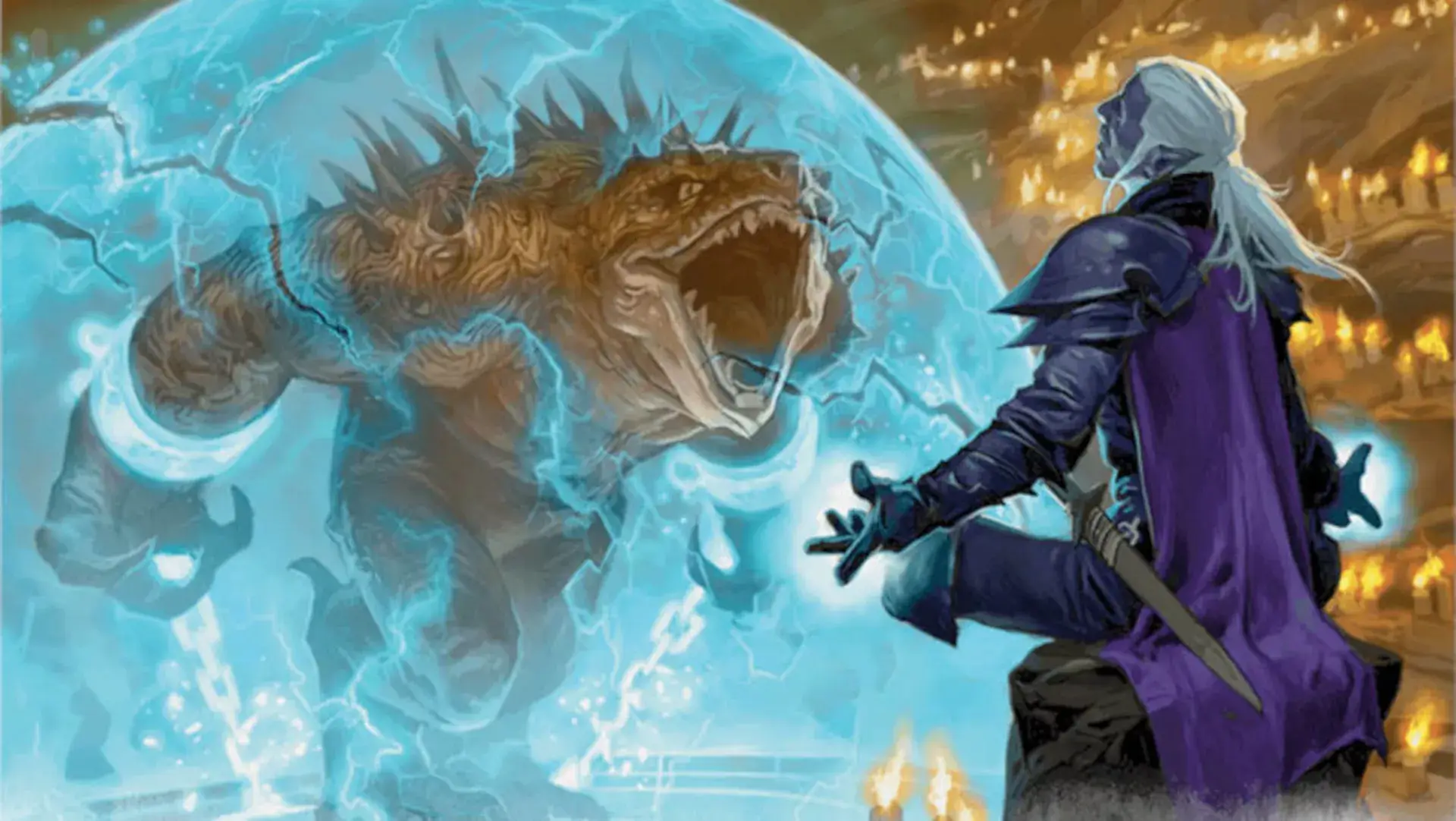
We’ve arrived at the beastly part of the guide. Arguably the longest section, but also one of the most useful. As always, I will be dedicating this section to the best Warlock spells in 5e so that you don’t have to worry about sifting through the ones that don’t do much for your class. What’s more, I’ll be taking you through Cantrips, Spells, and Subclass Spells.
The Best Warlock Cantrips
Booming Blade: Hexblades absolutely need this for their melee attacks.
Chill Touch: This is a good cantrip, but Eldritch Blast is better unless you want the very specific damage type that comes with this one.
Eldritch Blast: This is your main spell, and it’s a beast. Just make sure you have the Agonising Blast invocation because then you’ll be unstoppable.
Frostbite: It’s situational with low damage, but it does have a handy disadvantage for enemies.
Green-Flame Blade: This is another one that Hexblades really need, and it gives solid scaling damage as well.
Mage Hand: Action at a distance is a very useful thing to have, making it a very solid cantrip for anyone to have.
Mind Sliver: There is very little damage resistance for this type of magic, and psychic damage on an Intelligence save is perfect for a Warlock.
Prestidigitation: Honestly, just a fantastic all-around magic effect.
Sword Burst: Hexblades should rejoice again and definitely pick this up. It deals good damage in a decent area.
Toll the Dead: This is a little worse than Eldritch Blast, but it is the better choice if you are dealing with an enemy that has a high AC.
1st Level Spells
Armour of Agathys: You can use this to boost attacks, for protection, and it scales really well.
Cause Fear: Great for use against unintelligent foes.
Charm Person: When your natural skill is failing you, why not rely on magic instead?
Comprehend Languages: It’s a situational spell but also exceptionally useful.
Hex: An incredibly powerful spell that should be snapped up by you immediately.
Witch Bolt: Once you have two beams of Eldritch Blast it’s impractical, but until then it’s a solid choice.
2nd Level Spells
Darkness: A great way to see in both natural and magical darkness.
Invisibility: One of the best spells that allows for efficient scouting and surveillance.
Misty Step: Gives you a form of teleportation with a Bonus Action.
Shatter: You get some nice AOE with a lot of range.
Spider Climb: You need a reliable mobility spell before you get to fly, and this is it.
Suggestion: Especially useful outside of combat, you are the master of manipulation.
3rd Level Spells
Counterspell: An absolute essential for any caster.
Dispel Magic: Another essential spell, and one you should always keep handy.
Enemies Abound: It’s the perfect form of mind control, and if you manage to hit a target with low intelligence you can expect to have a strong hold on them for quite a while.
Fear: A great way to disarm a group of enemies quickly with a non-lethal AOE.
Fly: Honestly, this is just the best mobility spell available and there’s nothing more to say.
Gaseous Form: This is very useful for infiltrating those locked down areas, but it’s situational.
Hunger of Hadar: While a very powerful display, it doesn’t scale with your level.
Hypnotic Pattern: After you use fear, you can contain them with this. The perfect combo.
Intellect Fortress: This is absolutely devastating for any casters that use illusion magic or enchantments.
Major Image: You have the unlimited potential to create illusions, making this very powerful.
Summon Shadowspawn: What you summon is the misshapen ethereal form of an emotion. Think about it this way, giving that Fear spell a physical form.
Summon Undead: Now you can summon ghosts, sending them through walls and objects to horrify and torment your enemies.
Thunder Step: Think Misty Step but with damage. The downside here is that it does take up one of your action slots, which can be a little tricky for you.
Tongues: Since you’re the face, being able to interact with everyone you meet is essential.
Vampiric Touch: It lasts for a whole minute which is ideal for getting all those attacks in as a Hexblade. Seriously, Hexblades need to lap this one up.
4th Level Spells
Banishment: Throw that extraplanar enemy back to their home and watch as this spell scales with your level.
Charm Monster: Not only can this prevent or even end combat, but it also has a lot of roleplay potential if you want to add something extra to the game.
Shadow of Moil: This spell creates an incredible advantage for you and a big disadvantage for your enemies. Just make sure you brush up on the rules first – it’s easy to miss.
Sickening Radiance: Useful, powerful, also pretty complicated and will need a good read first.
Summon Aberration: So many great options are available with this, certainly one of the best summoning spells available to Warlocks.
Summon Construct: While Summon Aberration is better for combat, a construct is better in certain situations such as bodies of water or areas that biological beings would struggle in.
5th Level Spells
Enervation: Makes a nice and efficient change from Eldritch Blast if you’re getting bored of it.
Far Step: It’s like Misty Step but you can use it every round for a minute. The downside is that it does require you to use Concentration.
Hold Monster: The target gets to make the save every turn to break out, but unlike Hold Person it hits any creature type, not just humanoids.
Synaptic Static: It has a nice debuff and is a less powerful version of Fireball.
Wall of Light: This control spell deals great damage considering how little effort it takes you to cast, making it well worth the slot.
6th Level Spells
Circle of Death: The damage is good with a big area of effect as a nice bonus.
Conjure Fey: It’s good, but it requires Concentration and the summoning spells at fifth level tend to be a better choice.
Eyebite: Efficient, powerful, versatile, and gives you something with pizazz that’s not Eldritch Blast every turn.
Investiture of Ice: Honestly, the only really good Investiture spell. The difficult terrain and AoE abilities allow you to control which and how many enemies get close to you.
Mental Prison: It’s a strong single-target debuff, but it’s also your only spell at this level so you should get more out of it.
Soul Cage: A great spell, but only when used against Humanoids.
Summon Fiend: You get three excellent summoning options with this spell.
Tasha’s Otherworldly Guise: A versatile and powerful spell that you’re sure to love.
7th Level Spells
Crown of Stars: It doesn’t require Concentration, meaning you can pair it nicely with Hex. If you have Hexblade’s Curse, this is also the chance to give yourself a big single target buff.
Finger of Death: A strong single-target spell, but also a risky one.
Forcecage: This is an amazing spell. There’s almost nothing the targets can do to get out of it if they aren’t high-level casters.
Plane Shift: You can use this for personal or party travel as well as a form of banishment spell.
8th Level Spells
Dominate Monster: Simply the best mind control option you’ll find in the game.
Feeblemind: It’s great for crippling Charisma and Wisdom casters, but this really depends on how the DM allows the spell to play out. Therefore, you need to figure things out with them first.
Glibness: Negotiating and lying have never been easier with this spell. You’ll be buying a horse from a trader and selling it back to him for double the price.
Maddening Darkness: If you liked Hunger of Hadar, and you have Devil’s Sight, this is the spell for you.
9th Level Spells
Foresight: With this spell, you get to have the best day ever every time you decide to cast it.
Power Word Kill: Point and kill, but it’s not quite that simple. This spell is actually a little complex and you’ll need to do some thinking as well as reading before you cast it.
Psychic Scream: It’s the best AOE for this level and will decimate the entire room. Fan of exploding heads? Well, you’ll get all of that with this spell.
True Polymorph: This is the best spell at this level. You can turn yourself or an ally into something truly terrifying. If you keep it running for an hour, it becomes permanent… which can be both an excellent and a frightening prospect.
Pact of the Archfey Spells
1st Level: Faerie Fire is the most useful low-level spell here, and it gives you a load of damage.
2nd Level: Just not great spell options.
3rd Level: Blink is a great defensive, but only if you are using a melee build.
4th Level: Greater Invisibility is great but there are so many other options for becoming invisible that it is a little redundant.
5th Level: Dominate Person is incredible and can really turn the tide of a battle. You just have to make sure you can get it to stick.
Pact of the Celestial Spells
1st Level: If you want to multiclass as a Cleric, Cure Wounds is the spell you need to grab from this selection.
2nd Level: The spells here are good, but they get phased out pretty quickly as you level up.
3rd Level: You get access to Revivify from the Cleric spell list, and that’s fantastic.
4th Level: Wall of Fire, that’s all I need to say here. Thank me later.
5th Level: You get an AOE with Flame Strike, but it’s not as good as Fireball.
Pact of the Fathomless Spells
1st Level: Thunderwave is good if you end up getting surrounded.
2nd Level: Gust of Wind is below average, but you do get the ultimate Mage destroyer in the form of Silence. Just remember that it hurts you too.
3rd Level: Lightning Bolt is brilliant, but a radius spell would still be a better option.
4th Level: These are dump spells and restrict your elemental summoning abilities.
5th Level: Bigby’s Hand gives your class a lot of flavour and it’s incredibly versatile.
Pact of the Fiend Spells
1st Level: Burning Hands is an exceptional low-level spell and you have Command which scales as you level. What more could you want?
2nd Level: Blindness/Deafness is a really good one if you find yourself stuck and in need of a save. Scorching Ray is good too, but Eldritch Blast is better.
3rd Level: You get Fireball here, and do I really need to say anymore? In the words of the Legendary Stan Lee – ‘nuff said.
4th Level: Wall of Fire and Fire Shield offer you some incredible power.
5th Level: This level is pretty redundant because Flame Strike isn’t as good as Fireball.
Pact of the Genie Spells
1st Level: Detect Evil and Good doesn’t actually have that much practicality.
2nd Level: Phantasmal Force is good against opponents with low intelligence.
3rd Level: The ability to create food isn’t really a big thing, but it’s situational.
4th Level: You get a powerful single-target damage spell that scales with level.
5th Level: Creation is an exceptionally versatile spell that you’ll want to make use of.
Pact of the Great Old One Spells
1st Level: Two single-target save-or-suck debuffs, only one of which deals any damage. They are alright, but nothing special at first level.
2nd Level: Detect Thoughts can be handy, but the spells on this list don’t tend to be more useful than the ones you get naturally at this level.
3rd Level: Divination is a weak school of magic until higher levels, and if you take the pact of the chain you won’t need sending since you’ll have a carrier pigeon to do it for you.
4th Level: You get Black Tentacles which is an awesome control spell.
5th Level: Both Dominate Person and Telekinesis are excellent for controlling enemies.
Pact of the Hexblade Spells
1st Level: Shield is the ultimate choice until you get a second attack later on.
2nd Level: You get a better Smite and there is also Blur, a brilliant defensive option.
3rd Level: You get Elemental Weapons, and then there is Blink which is a better Blur.
4th Level: Yet another Smite. Hex and Phantasmal Killer are absolute beasts to use.
5th Level: Banishing Smite will end combat effortlessly, and you get Cone of Cold for some exceptional AOE action.
Pact of the Undying Spells
1st Level: Neither of the options here come close to Eldritch Blast.
2nd Level: Very useful spells, but likely the only ones in this Pact you’ll use often.
3rd Level: These spells are highly situational and you are unlikely to ever use them.
4th Level: Once again, we are looking at two highly situational spells.
5th Level: You get Contagion and Legend Lore, which are both fantastic options.
Eldritch Invocations
This is a massive aspect of building your character, which means you need to carefully consider which ones you’re going to pick. For this spell section, I have included all of your options so that you can line up the good and the bad to make your own decisions.
1st Level Invocations
Agonizing Blast: This is the single best and most important class ability of Warlocks. If you don’t take this, and work on maximizing your Charisma as early as possible, you might as well just play a different class. Not taking Agonizing Blast is a handicap you simply cannot overcome.
Armour of Shadows: Mage armour is only +1 better than Studded leather. If you’re going to get medium armour, this is obsolete. Otherwise, there are better offensive and support options for you.
Beast Speech: You don’t need this.
Beguiling Influence: You’re going to pick deception and persuasion from your class/background allotment of skills anyway.
Devil’s Sight: Ignoring one of the most common environmental and arcane hazards, darkness, gives you a tactical advantage few can match. If you learn to cast darkness yourself, you’ll have a very powerful (if selfish) tactic to employ.
Eldritch Mind: Your most commonly used spell, Hex, requires concentration. Why let it fall for no reason?
Eldritch Sight: It’s faster than casting detect magic as a ritual,
Eldritch Spear: The base range on Eldritch Blast is usually good enough.
Eyes of the Rune Keeper: You can get a couple of languages from your background. If you need more, it will be situational and you can always hire a translator or find someone to cast comprehends languages or tongues.
Fiendish Vigor: Good duration, no limit on how many times you cast it, and a decent duration make this a great invocation for heavy use.
Gaze of Two Minds: Situational, and not terribly strong.
Grasp of Hadar: Repelling blast fits better with the squishy nature of Warlocks.
Lance of Lethargy: Not terribly useful or powerful.
Mask of Many Faces: Quick shapeshifting, which is typically only useful if you’re an infiltrator.
Misty Visions: Better than minor illusion, but still not that great.
Repelling Blast: This can be used to break a grapple, get someone out of melee engagement, knock a creature off a cliff, through a door, or many other things.
Thief of Five Fates: Not worth the spell slot.
3rd Level Invocations
Aspect of the Moon: Only really useful if you’re playing an elf.
Book of Ancient Secrets: This is much better than taking the Ritual Caster feat, or many of the other invocations that give you ritual spells.
Gift of the Ever-Living Ones: Hopefully you aren’t stuck in the position to need this, but if you find yourself doing a lot of healing, it’s worth it.
Improved Pact Weapon: Hopefully you’re going to have a magic weapon to use instead of this invocation, but this might give you a bonus early. It really depends on your DM and how often you get magic weapons.
Investment of the Chain Master: If you have a familiar, this is mandatory. You go from having a pet that you can use for recon to having a combat-ready ally.
Rebuke of the Talisman: Outside of hellish rebuke, you don’t typically have anything to do with your reaction, so this is worthwhile solely on the action economy it provides.
Voice of the Chain Master: Investment of the Chain Master is strictly better, but his is a solid addition once you’ve got that. It allows you to scout more effectively, and communicate with people at a distance.
5th Level Invocations
Cloak of Flies: Strictly for Hexblades who find themselves in melee frequently, this has the potential to cause quite a bit of chaos. It lasts until dismissed, so once it’s on you can make good use of it later.
Eldritch Smite: Considering the damage eldritch blast with hex does, this isn’t worth a spell slot.
Far Scribe: Sending, message, or a cheap magic item can mimic this, which will usually be used for plot reasons.
Gift of the Depths: Definitely a must in an aquatic campaign, though you’ll probably have a reliable way to work underwater before you get to 5th level.
Maddening Hex: You’re likely going to have Hex up all day long anyway, so you might as well make the most of it.
Mire the Mind: You’re likely to have better uses of your spell slots.
One with Shadows: Invisibility is great, but the conditions on this aren’t conducive to the things you’d likely be trying to accomplish while invisible in the first place.
Sign of Ill Omen: A very poor use of your spell slots.
Thirsting Blade: Hexblades need this more than any other invocation. The only way for your pact weapon to keep up on damage is to et more attacks with it.
Tomb of Levistus: This is your last resort. You’re likely to use it as a last-ditch effort, so it’s not the best thing to have. Plan to never get to the point of needing it.
Undying Servitude: It’s just underwhelming.
7th Level Invocations
Bewitching Whispers: As great as this is, it really doesn’t scale well as you increase the level of your spell slots.
Dreadful Word: Confusion is an unreliable debuff. Skip it.
Ghostly Gaze: One of the better overall invocations, this allows you to never be ambushed on the other side of a dungeon door.
Protection of the Talisman: The Pact of the Talisman gives you access to a strong ability here. Considering you’re a very frail class, having more protection options is always a good thing.
Relentless Hex: Sometimes you need extra movement, but given your capacity for ranged attacks in eldritch blast these occasions are few and far in-between.
Trickster’s Escape: Freedom of movement is a powerful spell, but you’re not going to need it ninety-nine percent of the time.
Sculptor of Flesh: polymorph is one of the best buff spells in the game. Transforming a frail spellcaster into a powerful creature can save their life, and provide another melee ally right when you need it. Disguising a character as an animal allows a strong infiltration tool.
9th Level Invocations
Ascendant Step: You can cast fly.
Gift of the Protectors: This is a decent support option, but it’s one of the very few Warlocks have access to. Support isn’t really your thing, so this is a bit of a stretch.
Minions of Chaos: Tasha’s Cauldron of Everything added summon spells to the Warlock spell list, so if you have access to those spells, this is obsolete.
Otherworldly Leap: Allows you to cast fly.
Whispers of the Grave: You become a perfect homicide detective, able to speak to every corpse you come across.
12th Level Invocations
Bond of the Talisman: This is a powerful teleportation option. It’s more useful out of combat, but still useful to make a quick getaway.
Lifedrinker: Pact of the Blade and Hexblades specifically must take this invocation. It’s by far the strongest and most efficient means of increasing your weapon damage.
15th Level Invocations
Chains of Carceri: For such a high-level invocation, there are a lot of restrictions on this. If you’re fighting the right creature types very frequently at this point, it could prove to be very useful. If not, skip it.
Master of Myriad Forms: You already have access to Mask of Many Faces and this only improves on that slightly.
Shroud of Shadow: You can always be invisible if you want to.
Visions of Distant Realms: You should have this active at all times if you can help it. You will hardly ever be ambushed by magic or anyone carrying a magic item.
Witch Sight: Arcane sight is better than see invisibility since theoretically, you’d see the aura from an invisible creature and everything else magical as well.
To Conclude
The Warlock is definitely one of the most interesting and alluring classes that you’ll find in Dungeons and Dragons. They aren’t always the easiest to master, but once you figure things out they become one of the most rewarding characters to play. There is so much potential and diversity, so much untapped knowledge that becomes apparent as you play.
If you’ve chosen a Warlock for your next campaign, we’d love to hear more about the character that you created. What kind of build did you go for? Are you enjoying playing it? Make sure you leave us a comment below so that we can hear more about the fun you’re having at the table.

